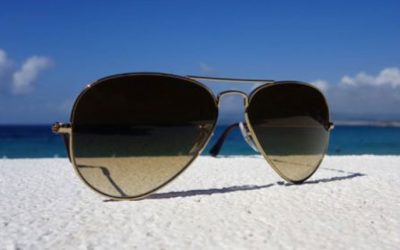Our Blog

4 Questions About Age-Related Macular Degeneration
What is Age-Related Macular Degeneration (AMD)? Age-Related Macular Degeneration — called AMD for short — is an all-too-common eye disease that blurs central vision and can make it harder to drive, read, see faces or do “up-close” work. It is...

Low Vision: Who’s at Risk?
February is Age-Related Macular Degeneration and Low Vision Month. Many people aren’t sure what the definition of low vision is or how it manifests in patients’ lives. Let’s dive into low vision, explore its causes and symptoms, and discuss how patients can learn to navigate the challenge of not seeing clearly even while wearing corrective lenses. What is the definition of Low Vision? Low vision is the term for impaired vision that cannot be corrected by conventional eyeglasses, medications, or surgical treatments. About 4 million adults in the U.S. live with low vision, and nearly 500,000 will be diagnosed this year alone. That number is expected to increase to more than...
Is Your Student At Risk for Progressive Myopia?
In our offices and around the country, optometrists are seeing a significant—and disturbing—new trend: more and more patients are presenting with myopia, or nearsightedness. People with myopia can see close-up objects clearly, but objects at a distance...
7 Ways College Students Can Protect Their Eye Health
Are you the parent of a college student or a new college student yourself? It’s a big responsibility! College days are full of excitement and learning. Sometimes you learn in a classroom, and sometimes you learn things from friends in a dorm or other social...
When—and Why—Your Child Needs A Comprehensive Eye Exam
Vision is one of the most precious of our five senses — its impact on our lives can’t be overstated. Up to 80% of the knowledge we learn and the information we perceive comes in through our eyes. That’s why protecting your vision—and the vision...
Why Parents Must Prioritize Back-To-School Eye Exams For School-Age Kids
August is Vision and Learning Month in the U.S. The goal of observing this vital link between vision and how we learn serves to enhance awareness among both parents and educators about how often undiagnosed or misdiagnosed visual problems impact a...
9 Ways To Protect Eyes from UV Damage
As we continue observing National UV Safety Month throughout July, we want to offer smart strategies to help you minimize the exposure your eyes have to harmful UV rays. Minimizing UV ray exposure can help maintain your healthy vision for as long as possible. UV ray...
Why It’s Smart To Protect Your Eyes From the Sun
It’s the dog days of summer! If it’s not hot enough for you in July, it never will be. July is National UV Safety Awareness Month. With more than 14 hours of sunlight each day, it’s a great opportunity to learn why you need to protect your eyes from...
7 Comments From Post-Procedure Cataract Patients
In our practice, we see a lot of patients in their 60s, 70s, and 80s. Of the eye problems and diseases this age group faces—including glaucoma, macular degeneration, diabetic eye disease, and other inoperable conditions—cataracts are the one eye condition...
8 Facts About Cataracts
June is Cataract Awareness Month, an ideal time to share information about one of the most common vision problems people experience as they age: the formation of cataracts. A cataract is a clouding or yellowing of the eye’s natural lens, which typically occurs...
8 Do’s and Don’ts for Cleaning Sunglasses
It’s sunglasses season! In our optometric practice, it’s always sunglasses season. That’s because we recommend everyone wear their sunglasses 365 days a year, rain or shine. Doing so will protect your eyes from the damaging UV rays of the sun that...








